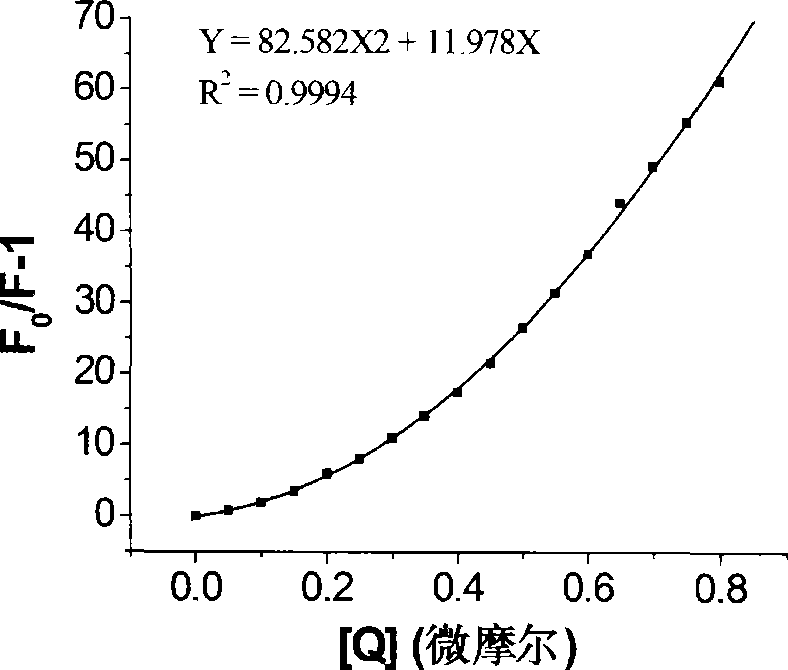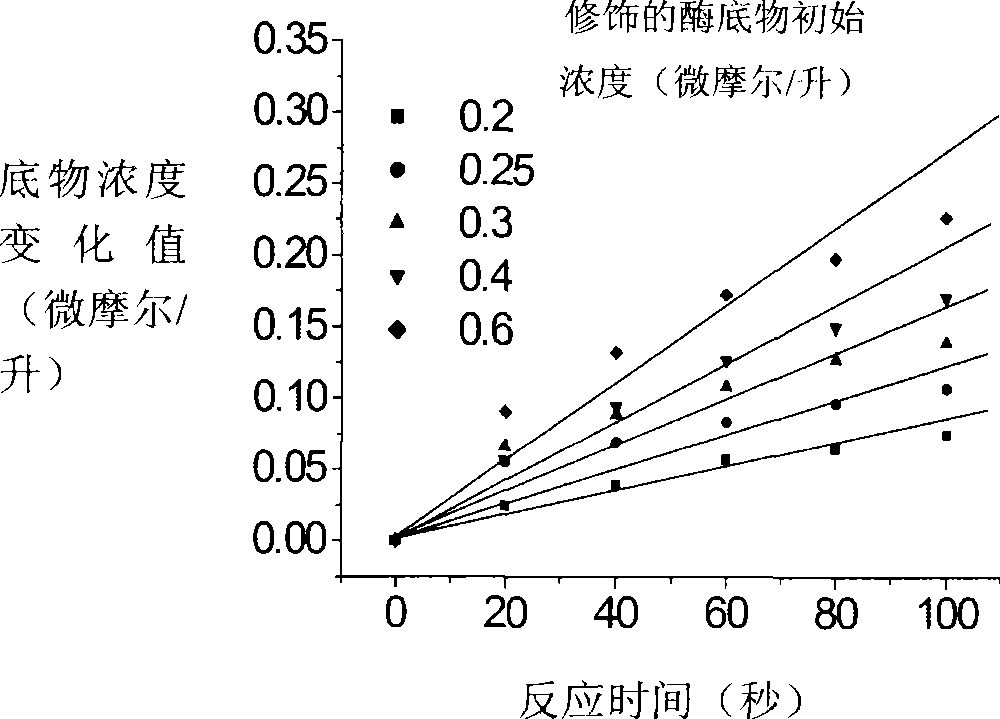Application of fluorescent probe for detecting enzyme activity and screening passivating agent
A fluorescent probe and enzyme detection technology, applied in the field of enzyme analysis, can solve the problems of difficult double-label modification, impact on enzyme activity, and high cost of double-labeling
- Summary
- Abstract
- Description
- Claims
- Application Information
AI Technical Summary
Problems solved by technology
Method used
Image
Examples
Embodiment 1
[0076] Embodiment 1, fluorescent probe PFP-SO 3 - Application in Enzyme Activity Analysis and Inhibitor Screening
[0077] Preparation of chemically modified enzyme substrate: under nitrogen protection, add 6-(p-methyl red) aminocaproic acid (38mg, 0.1mmol) and Carbonyldiimidazole (24 mg, 0.15 mmol), magnetically stirred at room temperature for 30 minutes. The reaction solution was transferred by syringe to a 5 mL single-necked bottle containing acetylcholine bromide (10 mg, 0.08 mmol), diazabicycloundec-7-ene (21 μL, 0.14 mmol) and dimethyl sulfoxide (0.25 mL), The reaction was stirred at 40°C for 24 hours. After concentration under reduced pressure, it was separated by silica gel column (eluent: dichloromethane / methanol / water=65 / 25 / 4, v / v / v) to obtain the target product 6-(p-methyl red)aminocaproyl chol Alkali bromide (15 mg, 34%), that is, the fluorescent probe PFP-SO is attached to the enzyme substrate 3 - Matched quencher group.
[0078] Formula V
[0079] Drawi...
Embodiment 2
[0082] Embodiment 2, the application of fluorescent probe PFP-COOH in enzyme activity analysis
[0083] First prepare the same chemically modified enzyme substrate according to the method in Example 1.
[0084] Draw a standard detection curve: add 1.0mL phosphate buffer solution (25mM, pH8) to a 3mL colorimetric cell, add polymer PFP-COOH (formula VI) to 2.0μM, and measure its fluorescence emission spectrum at an excitation wavelength of 376nm. Then the above-mentioned modified enzyme substrate is continuously added dropwise, and the fluorescence emission spectrum is measured after each drop of the above-mentioned modified enzyme substrate. Record the fluorescence intensity value at 424nm of the fluorescence emission spectrum, expressed as (F 0 / F-1) is the ordinate, [Q] is the abscissa, and draws the Stern-Volmer curve as a standard detection curve, such as Figure 7 shown.
[0085] Formula VI
[0086] AChE activity analysis: add 1.0mL phosphate buffer solution (25mM, ...
PUM
 Login to View More
Login to View More Abstract
Description
Claims
Application Information
 Login to View More
Login to View More - R&D
- Intellectual Property
- Life Sciences
- Materials
- Tech Scout
- Unparalleled Data Quality
- Higher Quality Content
- 60% Fewer Hallucinations
Browse by: Latest US Patents, China's latest patents, Technical Efficacy Thesaurus, Application Domain, Technology Topic, Popular Technical Reports.
© 2025 PatSnap. All rights reserved.Legal|Privacy policy|Modern Slavery Act Transparency Statement|Sitemap|About US| Contact US: help@patsnap.com



